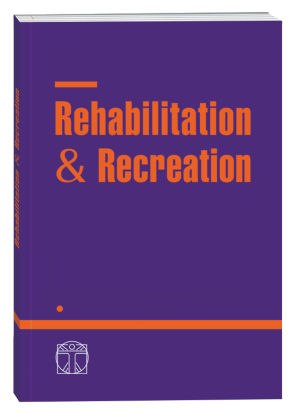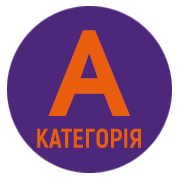CONCEPTUAL BASES OF APPLICATION OF PHYSICAL REHABILITATION MEANS IN THE PROCESS OF RECOVERY OF ATHLETES WITH CARDIORESPIRATORY SYSTEM OVERSTRAIN
DOI:
https://doi.org/10.32782/2522-1795.2024.18.10Keywords:
autonomic regulation, heart rate variability, athletes, overreachingAbstract
The aim is to investigate the prerequisites for the use of physical rehabilitation means in athletes with cardiorespiratory system overstrain in the process of recovery. Material and methods of the research. Using Internet search databases (Scopus, Web of Science, PubMed, Google Schoolar, PEDro) the analysis and systematization of scientific and methodological literature on physical rehabilitation of athletes with cardiorespiratory system overstrain was carried out. Study results. An adequate recovery with the methodical use of rehabilitation measures is of great importance for the growth of the level of sports achievements. When choosing them the level of functional state of the body as a whole as well as the systems that are most stressed during physical activity is taken into account. The particular attention should be paid to the state of the ANS (autonomic nervous system), which ensures the most optimal course of adaptation processes in the cardiorespiratory system as well as in the athlete’s ability to maximize the use of physiological reserves and also affects the speed of recovery processes. To assess the activity of the ANS, HRV indicators were proposed, the analysis of which is a practical non-invasive method for assessing the autonomic status of the heart and makes it possible to diagnose overstrain and prevent the occurrence of pathological conditions. The HRV parameters that characterize the formation of pre-pathological conditions, namely overstrain by sympathetic and, especially, by parasympathetic types, include RMSSD, IAB, PAPR and VLF. The search for effective rehabilitation tools, that would allow us to correct functional changes in the athlete’s body occured under the influence of physical activity and that can be used directly in the conditions of the training process, focused us on the means and methods of recovery that can be used by the athlete himself – active means, or used by specialists with minimal interference with the training process against the background of nutritional optimization – passive means. Conclusions. Correction of functional changes in the body of a sportsman, which occur under the influence of physical activity, is possible due to effective means of rehabilitation, the choice of which is carried out in close cooperation with a sports medicine doctor, rehabilitation therapist and coach. When choosing physical rehabilitation means their effect on the regulatory mechanisms provided by the somatic and autonomic parts of the nervous system, as well as the possibility of using them in the “field” conditions of the training process under the guidance of a rehabilitation specialist, is taken into account.
References
Гузій О., Романчук О., Магльований А. Постнавантажувальна динаміка показників варіабельності серцевого ритму у висококваліфікованих спортсменів при формуванні перенапружень за симпатичним та парасимпатичним типами. Art of Medicine. 1. 2020. Вип. 16. С. 28–37. DOI: 10.21802/artm.2020.4.16.28.
Гузій О.В. Зміни типів автономної регуляції серцевого ритму за впливу інтенсивних фізичних навантажень. Науковий часопис НПУ імені М.П. Драгоманова. 2019. Випуск 5, № 113. С. 43–49.
Гузій О.В., Магльований А.В., Романчук О.П., Трач В.М. Відношення висококваліфікованих спортсменів до засобів відновлення організму в умовах навчально-тренувального процесу. Фізична реабілітація та рекреаційно-оздоровчі технології. 2020. № 5(3). С. 12–20. https://doi.org/10.15391/prrht.2020-5(3).02.
Гузій О.В., Романчук О.П. Постнавантажувальна динаміка варіабельності артеріального тиску на кожному серцевому скороченні у висококваліфікованих атлетів. Фізична реабілітація та рекреаційно-оздоровчі технології. 2021. 6(1): 5–14. DOI: https://doi.org/10.15391/prrht.2021-6(1).01.
Романчук О.П., Гузій О.В. Центральний рівень сенсомоторної регуляції спортсменів при формуванні перенапруження серцево-судинної системи. Фізична реабілітація та рекреаційно-оздоровчі технології. 2020. № 5(1). С. 41–51. doi.org/10.15391/prrht.2020-5(1).06.
Apostu M. The Contribution of Psychotherapeutic Means in Developing of Adaptive Behaviours to Youth Sportsmen. Procedia – Social and Behavioral Sciences. 2014. 140. P. 586–590. doi.org/10.1016/j.sbspro.2014.04.475.
Bellenger C., Thomson R., Robertson E., Davison K., Nelson M., Karavirta L., et al. The Effect of Functional Overreaching on Parameters of Autonomic Heart Rate Regulation. Eur J Appl Physiol. 2017. 117(3). P. 541–50.
Dabiri B., Zeiner K., Nativel A., Kaniusas, E. Auricular vagus nerve stimulator for closed-loop biofeedback-based operation. Analog Integrated Circuits and Signal Processing. 2022. 112(2). P. 237–246. doi.org/10.1007/s10470-022-02037-8.
Davis H.L., Alabed S., Chico T.J.A. Effect of sports massage on performance and recovery: a systematic review and meta-analysis. BMJ Open Sport Exercise Medicine. 2020. 6(1). e000614. doi.org/10.1136/bmjsem-2019-000614.
Esco M., Flatt A. Ultra-short-term heart rate variability indexes at rest and postexercise in athletes: evaluating the agreement with accepted recommendations. J Sport Sci Med. 2014. 13(3). P. 535–41.
Guzii O., Mahlovanyi A., Romanchuk O. Multifunctional changes in the athletes’ body during the formation of autonomic regulations’ overstrain under the influence of training load. Physical rehabilitation and recreational health technologies. 2023. 8(2). P. 91–104. doi.org/10.15391/prrht.2023-8(2).03.
Hedelin R., Kentta G., Wiklund U., Bjerle P., Henriksson-Larsen K. Short-term overtraining: effects on performance, circulatory responses, and heart rate variability. Med Sci Sports Exerc. 2000. 32(8). P. 1480–4.
Le Meur Y., Pichon A., Schaal K., Schmitt L., Louis J., Gueneron J., Vidal P.P., Hausswirth C. Evidence of parasympathetic hyperactivity in functionally overreached athletes. Medicine and Science in Sports and Exercise. 2013. 45(11). P. 2061–2071. doi.org/10.1249/MSS.0b013e3182980125.
Nunes G.S., Bender P.U., de Menezes F.S., Yamashitafuji I., Vargas V.Z., Wageck B. Massage therapy decreases pain and perceived fatigue after long-distance Ironman triathlon: A randomised trial. Journal of Physiotherapy. 2016. 62(2). P. 83–87. doi.org/10.1016/j.jphys.2016.02.009.
Romanchuk A., Guzii O. Variability and pattern of spontaneous respiration in different types of cardiac rhythm regulation of highly trained athletes. International Journal of Human Movement and Sports Sciences. 2020. 8(6). P. 483–493. doi.org/10.13189/saj.2020.080622.
Downloads
Published
How to Cite
Issue
Section
License

This work is licensed under a Creative Commons Attribution-NonCommercial-NoDerivatives 4.0 International License.












